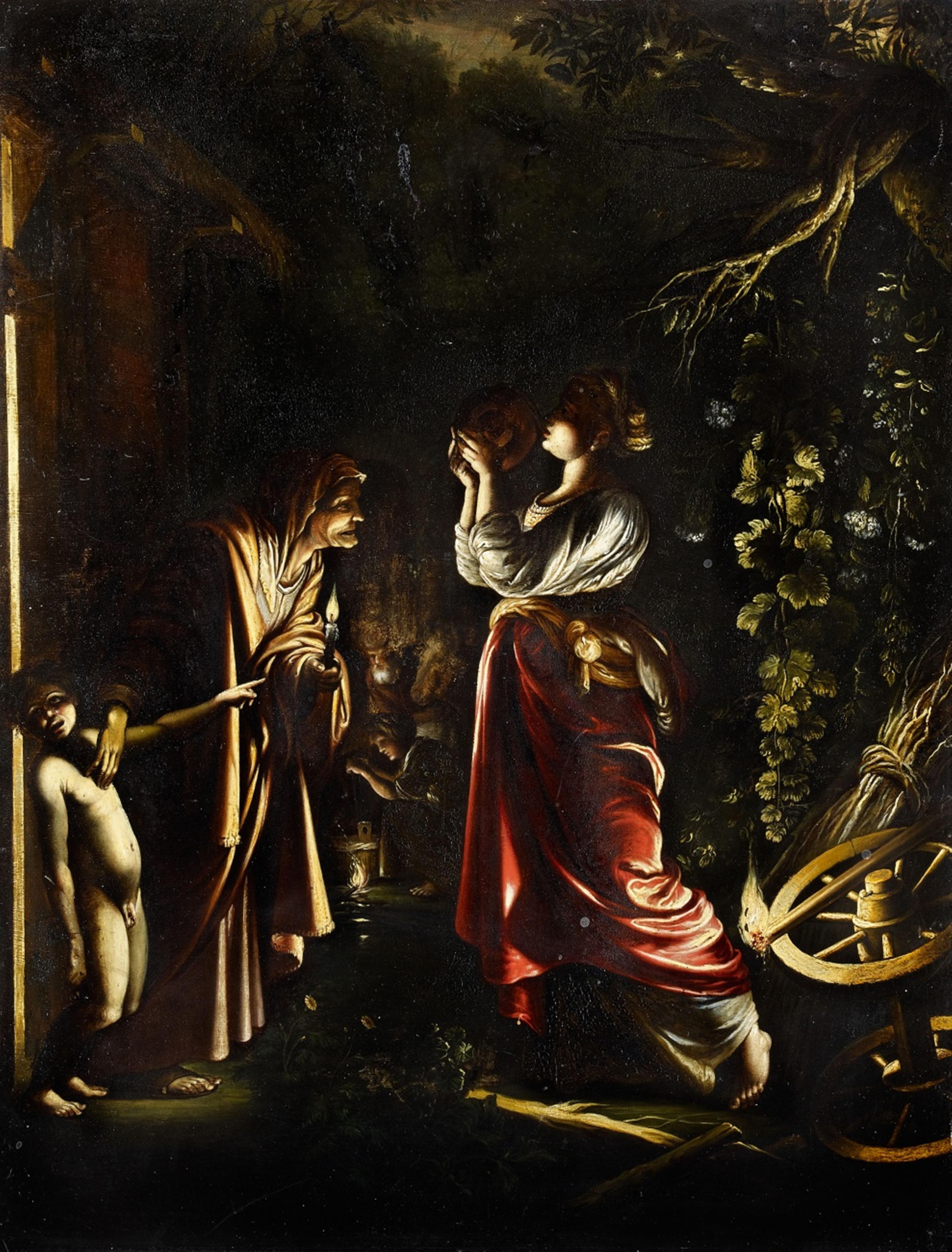Adam Elsheimer, copy after
The Mocking of Ceres
Oil on copper. 40.5 x 31.6 cm.
The present painting is one of the very few 17th century copper versions after Elsheimer´s original, for long lost and identified by Prof. Klessmann as the painting badly damaged in the Bader Collection, Milwaukee (R. Klessmann, Elsheimers Verspottung der Ceres, in Städel-Jahrbuch, N.F. 16, 1997 (1998), pp. 239-48). An early engraving by Goudt and a few earlier copies speak for the great popularity of the subject, which was first painted by Elsheimer and does not find any iconographic precedent (H. Weizsäcker, Adam Elsheimer, der Maler von Frankfurt, Berlin 1952, pp.41-42). The painting was largely appreciated by contemporaries, as testified by the presence of a copy in Rubens´ collection (now in the Prado and formerly identified as the original), and by the fact that Gerard Dou painted a copy from the original before it was sent to England (C. L. Hagedorn, Lettre a un amateur de la peinture, Dresden 1755, p. 179). Even Elsheimer himself engraved his own painting (Hamburger Kunsthalle: in the opposite sense of Goudt´s engraving).
Keith Andrews (K. Andrews, Adam Elsheimer, Werkverzeichnis der Gemälde, Zeichnungen und Radierungen, Munich 1985, pp. 152-153) believes that both versions in the Prado and the Bader collection are not to be considered the originals and supposes the existence of two different prototypes: in fact, the boy in the Prado painting is represented in profile, whereas in Goudt´s engraving Stellio is shown full-face. There are different preparatory drawings by Elsheimer (respectively in Hamburg and Vaduz), which show the compositional progress.
The present work is in the opposite sense of Adam Elsheimer’s own engraving, as show two further recorded copies in Brunswick and Milano, Private Collection (Weizsäcker 1952, op. cit., p. 42), both of poor quality.

